Inclusivity isn’t a fad, or a trend; it is an absolute necessity. Whether that is finding the right accessibility participants or making sure you have a range of people with different ethnic backgrounds sharing their feedback with you, the buck stops with the user researcher when it comes to ensuring research is inclusive.
When it comes to referring to different ethnic groups, not even government agencies can agree on a terminology. The dilemma is: how do you describe exactly who you need to find for your research without putting people into a box? How do you recruit your ideal users without alienating them?
To address this, we recently asked a few questions to our community of participants, specifically focussing on the opinion of non-white people to get their opinions on the best way to approach ethnicity questions during the user recruitment and user research processes.
We wanted to know two things from this research:
+ What is the best approach to ask about people’s ethnicity during recruitment and research?
+ How do you promote content to an audience to ensure inclusivity?
Representation of ethnicity
The first stage of our survey looked at how people would categorise their ethnicity when offered the following options:
+ Any White background
+ Mixed ethnicity / Multiple ethnic groups
+ Any Asian background
+ Any Black background
+ Other ethnic group
+ None of the above
Does that seem limiting? We thought so as well, but our first goal was to ensure that only the non-white participants moved on to take the rest of the survey. We decided on these initial options based on advice published on the Gov.uk website, and asked how people felt about this initial categorisation.
59.1% of participants from non-white background feel like the options about ethnicity need to be greater than ‘White, ”Black’, ‘Asian’, ‘mixed ethnicity’ or ‘other’. People want specificity when it comes to ethnicity and background.
Unsurprisingly, only giving participants five options to describe their ethnicity will mean a large number of non-white participants feel like the options are limiting and broad. Let’s break this data down further – here’s the question we asked:
+ Do you feel like the options provided in the previous question represent your ethnicity?

When looking at the data, two in three people that considered ‘Any Black background’ to be the closest option that represented their ethnicity said that the options were not representative enough. When asked why, individuals gave a variety of answers.
 Ethnicity means more than just the colour of my skin. Ethnicity is not about races. Ethnicity is identifying with a group that shares the same values, culture, beliefs, religion (etc.). Being black does not mean I’ll be able to relate to or identify with every other black person’s belief and values. There needs to be more specific selections in these regions.
Ethnicity means more than just the colour of my skin. Ethnicity is not about races. Ethnicity is identifying with a group that shares the same values, culture, beliefs, religion (etc.). Being black does not mean I’ll be able to relate to or identify with every other black person’s belief and values. There needs to be more specific selections in these regions.
Many people said these options were too broad and ethnicity is not just about the colour of someone’s skin, but also how an individual identifies. It’s essential for our industry to recognise this: as user recruiters and researchers, we often feel the need to categorise responses to come up with insights and percentages, but are we getting the right insights from our audiences if we are limiting their options?
When we look at groups by age, older groups (those aged 55+) are even less likely to feel like these options represent their ethnicity. This is vital information for researchers who are targeting profiles over 55 years old, as these individuals are less likely to respond positively to this question.
Key learning: Ethnicity isn’t a radio button with one answer. A lot of people will choose more than one ethnicity as people can come from multiple backgrounds. If possible, use an open text-box when asking about ethnicity and let the respondent answer openly about their background. If you’re working on a quantitative project and and an open-text box doesn’t work, expand your options.
How non-white participants feel about their ethnic backgrounds being grouped
At People for Research, similarly to what happens across our industry, we often get user recruitment briefs asking for a variety of ethnic backgrounds to increase inclusivity in research. When we get these briefs, they often request for us to “increase BAME responses”, “more PoC needed” or “people of diaspora wanted for research”. We typically use similar terms at two stages during the recruitment:
1. When screening participants
When asking about ethnicity we need to ensure we are being inclusive.
2. When promoting the research projects
When trying to spread the word about our research opportunities through advertising or external partners, we need to use language to promote inclusivity.
However, we know there are problems with all of the terms used in the examples above, which is why we wanted to know what our database thought of terminology to promote inclusivity in user research.
In our survey, we asked how people felt about the following terms to refer to diverse groups of non-white people. The following lists the percentages that agree with widely used terms and acronyms:
+ BAME – 40.1%
+ PoC – 22.1%
+ Diverse groups – 22.1%
+ Minority groups – 12.7%
+ BME – 11.0%
+ Diaspora – 6.8%
Over 24% of people replied they didn’t agree with any of the options listed and 18.6% said they would prefer ‘other’ grouping option. Out of these participants that selected ‘none of the above’/’other’ in the comments, their additional comments followed a similar trajectory, with a lot of individuals saying that specificity is better than mass grouping terms like BAME.
Here is a breakdown of how people from different ethnic backgrounds (based on their response to the first question) feel about the different mass grouping terms.

The acronym BAME continues to divide opinion amongst groups, with 60.4% of people who selected ‘Asian background’ saying they were comfortable with the terms, where only 23.7% of people who selected a ‘Black background’ accept the term. Here is a quote that perfectly illustrates this point:
 I don’t feel that my ethnicity nearly fits into one box, the ability to make clear the fact that I’m not monoracial feels important for me.
I don’t feel that my ethnicity nearly fits into one box, the ability to make clear the fact that I’m not monoracial feels important for me.
Younger people are more comfortable with terms like BAME, diaspora, diverse groups and minority groups, where people over 55 years old don’t feel like any of the terms are appropriate.
Key learning: Try to avoid using mass grouping terms in user recruitment and research. A term like BAME can make participants feel excluded, rather than being inclusive. Try to be as specific as possible: if you need more people with an Indian/Bangladeshi/Pakistani background, say that in your brief or any other research documents.
Does technology and related fields feel inclusive?
You may remember the ‘racist tap’ anecdote that went viral in 2015, when two friends shared their experience of trying to use a soap-dispensing tap that didn’t recognise black skin because it had been developed and tested by and with white people only. Unfortunately, this is only one example of technology discriminating against non-white people.
Another excellent example is how artificial intelligence traditionally discriminates against non-white users. You can find a few examples in this article.
Based on this, we asked our participants if they felt like user recruitment, user testing, design and technology were inclusive of their ethnicity. Almost one in four – 24.5% – people who completed our quantitative study believe that the digital world and the testing that happens on the side are ‘quite non-inclusive’ or ‘very non-inclusive’.
Here are a few quotes from our participants when asked to explain why they selected the above options.
 When testing beauty products or other experiences, the questions are not always geared at people of colour.
When testing beauty products or other experiences, the questions are not always geared at people of colour.
 I feel as though my age and my ethnicity can be barriers to my being recruited for research or testing.
I feel as though my age and my ethnicity can be barriers to my being recruited for research or testing.
 If recruiting particular ethnicities, do some research on relevant issues first. For example, my wife did some research on how our ethnicity (Indian) and religion (sikh) are represented and what could be changed in a survey. The researcher did not know much about basic issues that could have relevant to sikhs. This could have been fixed by just doing a little bit of background research.
If recruiting particular ethnicities, do some research on relevant issues first. For example, my wife did some research on how our ethnicity (Indian) and religion (sikh) are represented and what could be changed in a survey. The researcher did not know much about basic issues that could have relevant to sikhs. This could have been fixed by just doing a little bit of background research.
These are just some of the highlights from our survey. We hope this information is useful and helps us move towards a more inclusive industry mindset. If you would like to see the full set of data collected during this survey, please drop us an email at info@peopleforresearch.co.uk.
![]() Cathryn Innocent, Senior Project Manager | Diversity & Inclusion Ambassador
Cathryn Innocent, Senior Project Manager | Diversity & Inclusion Ambassador
If you would like to find out more about our in-house participant recruitment service for user testing or market research get in touch on 0117 921 0008 or info@peopleforresearch.co.uk.
At People for Research, we recruit participants for UX and usability testing and market research. We work with award winning UX agencies across the UK and partner up with a number of end clients who are leading the way with in-house user experience and insight.


